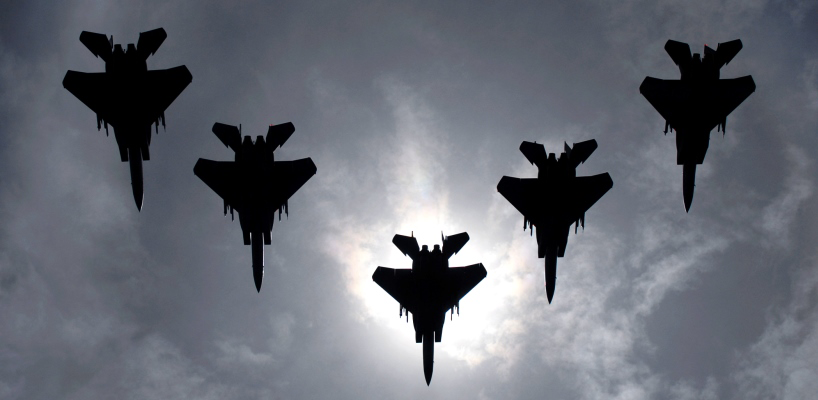When it comes to U.S. fighter jets, the new, multi-variant, stealthy F-35 grabs most of the headlines nowadays as it nears the end of a long development phase and begins to enter operational service. But older fighters are far from being sidelined, as a recently awarded Air Force contract shows.
Boeing announced Oct. 1 that it has received a $4 billion contract to upgrade the Air Force’s F-15 fleet with the Eagle Passive Active Warning Survivability System (EPAWSS), a new electronic warfare suite designed to detect and counter advanced air and ground threats and better protect air crews. BAE Systems will develop and manufacture the all-digital system as a subcontractor to Boeing, the jet’s builder.
“As we look at future threats, enhanced electronic warfare is more essential than ever to improve overall survivability,” said Lt. Col. James Parslow, the Air Force’s F-15 EPAWSS program manager. “We look forward to adding this next-generation capability to enhance the air superiority mission of the F-15.”
Upgrades Keep Older Systems Viable
EPAWSS will be installed on more than 400 F-15Es and F-15Cs, replacing the Tactical Electronic Warfare System (TEWS), which has been in use since the 1980s. The Air Force and Boeing said the upgrade is crucial to keeping the F-15 viable and in service past 2040.
“The proliferation of fourth-generation enemy aircraft, sophisticated ‘double-digit’ anti-aircraft missile systems and other enemy systems pose a significant threat to F-15 survivability,” the Pentagon wrote in its fiscal year 2016 budget request, now pending before Congress. EPAWSS “will replace the F-15’s functionally obsolete self-defense TEWS to enhance weapon system situational awareness and survivability against enemy threats. F-15 EPAWSS will also improve reliability and sustainability.”
Mike Gibbons, vice president of Boeing F-15 programs, said EPAWSS will provide “the latest in jamming, targeting, infrared threat detection and enhanced decoy capabilities” and “will ensure the F-15 is relevant and dominant through 2040 and beyond.” BAE said EPAWSS will “improve aircraft protection with advanced electronic countermeasures, radar warning, and increased chaff and flare capability.”
BAE plans to conduct its EPAWSS work at company sites in New Hampshire, New Jersey and Texas. “This selection builds on our extensive electronic warfare legacy, a history we were able to leverage to develop an executable, affordable and low-risk solution for the F-15 fleet,” said Brian Walters, vice president and general manager of electronic combat solutions at BAE Systems.




